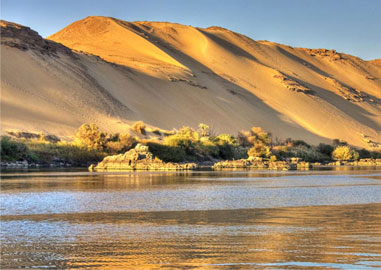
Amazing Facts about Mount Vesuvius - Location, History and Eruptions
Posted By M.IsacJust like floods, tsunamis and earthquakes, the sudden volcanic eruptions in certain parts of the world do cause a mega scale loss of property, livestock as well as precious human lives. Composed of the alternating layers of lava and ash, the Mount Vesuvius is located in the Gulf of Naples, Italy, and has a long history of large, destructive eruptions. It also has proximity to the populated area and is grouped among the 16 Decade Volcanoes. Owing to the habitation of about three million people in its proximity, it is considered as one of the world's most dangerous volcanoes. It has a strong tendency towards sudden volcanic eruptions, and the given area has been found out to be the most densely populated volcanic region in the world. Listed below are some of the mind-blowing facts about Mount Vesuvius which, along with adding a great deal to your knowledge, will serve as a potential source of entertainment for you:
- The gigantic volcanic eruption of 79 AD left a very ugly mark on the history of mankind as, at that time, the huge amount of lava emitted by the Mount Vesuvius buried the Roman cities of Herculaneum and Pompeii under its deadly lava and ash.
- Concerning its location, the mountain of active volcano is located in the Gulf of Naples at the distance of about 9 kilometer from the city of Naples in Italy.
- Vesuvius enjoys the status of being the only active volcano on the entire mainland Europe and is one of the most famous eruption sites on the globe.
- Based on the fact that it involves typically explosive eruptions as well as pyroclastic flows, the volcano is classified as the complex stratovolcano which is composed of the alternating layers of lava and ash placed one over the other.
- It has the eruption cycle of roughly 20 years, whereas the last serious eruption was witnessed in 1944 which was also the greatest ever eruption during the previous century.
- Estimated to be about 17,000 years old, the Mount Vesuvius measures approximately 30 miles around its base and goes as high as 4,203 feet above the sea level.
- The present day large cone of the humpbacked mountain is actually the remnant of the relatively very larger structure called Monte Somma.
- When it erupted during the height of the World War II in 1944, it caused the destruction of the US bomber planes that were stationed a few kilometers away.
- The Romans and Greeks regarded the mountain as being sacred to the hero and demigod Hercules. That is why the town of Herculaneum was built at its base and was named after him.
- After a number of catastrophic eruptions of Mount Vesuvius, many different things have been recovered from the place including the perfectly preserved bodies of the victims, a body of a dog, stone-works, drinking chalices, heating stoves, eye-shields, and so on.
- In the calamitous eruption of 79 AD, the volcanic debris formed a significantly high layer of up to 20 feet over the ancient cities of Pompeii and Herculaneum.
- The eruption of 1906 caused immense loss to the property as well as claimed the lives of about 2000 individuals.
- As many as 3000 people were engulfed by death during the unfortunate outburst of 1931, which resulted in the annihilation of five towns located in the vicinity.
- The eruption of 79 AD is also known as the Plinian Explosion as it was described, in a letter, by Pliny the Younger and in this catastrophe his uncle, Pliny the Elder, was also killed.
- In a Plinian eruption, an extremely gas-rich, viscous magma explodes deeper inside the volcano, thus leading to a tremendous blast that shoots straight up at twice the speed of sound and creates a vertical column of ash as high as 20 miles.
- Mount Vesuvius is said to be a part of the "Campanian Volcanic Arc", which is a line of volcanic regions that formed along a subduction zone. The subduction zone, in turn, came into existence by the convergence of the African and Eurasian plates.
- The "Campanian Volcanic Arc" stretches along the length of the Italian peninsula, and also serves as a source of different other volcanoes, including Vulcano, Mount Etna, Stromboli, and the Phlegrian Fields.
World Information - Latest Articles

Most Natural Beautiful Country in the World
Written By IsaacQuantifying the beauty of a country for the sake of ranking is a tough task. It requires deep...

Facts About the Most Technologically Advanced Cities in the World
Posted By IsaacToday economic strength and advances in technology go hand in hand in determining...

Largest River in The World
Posted By IsacThousands of rivers flow through different parts of the earth and enrich it with precious...
